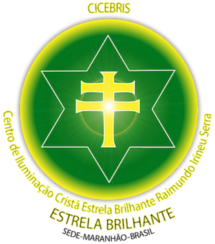
The Santo Daime
Santo Daime is a religious manifestation that emerged in the Amazon region in the first decades of the 20th century. It consists of a spiritualist doctrine that is based on the sacramental use of an entheogenic drink (for scientists, a psychedelic drug), ayahuasca, with the aim of catalyzing interior and spiritual processes always with the objective of healing and well-being of the individual.
The doctrine has no proselytism, spiritual practice is essentially individual, with self-knowledge and internalization being the means of obtaining wisdom. According to its adherents, the doctrine of Santo Daime is a Christian spiritual mission, which leads its practitioners to forgiveness and the regeneration of their being. This happens because the Daimist, by participating in worship and drinking Santo Daime, begins a process of self-knowledge, which aims to correct defects and always improve himself, so that he can one day achieve perfection. In rituals there is always a strong musical presence. Religious hymns are always sung and maracas, an ancestral indigenous instrument, are used in most places of worship.
It emerged in the Brazilian state of Acre, at the beginning of the 20th century, with the farmer and descendant of slaves Raimundo Irineu Serra as its founder, who came to be called within the Doctrine and by everyone who knew him as Mestre Irineu. After discovering the sacramental drink called ayahuasca by the natives of the Amazon region, Irineu Serra had a vision of Marian characteristics, in which a superior spiritual being hands him the mission of Santo Daime.
History
Raimundo Irineu Serra was born in São Vicente Ferrer, in the State of Maranhão in 1892. At the end of the first decade of the century, he embarked for the then Territory of Acre to work in the rubber plantations, where he settled near the city of Brasiléia, on the border with Bolivia. It was there that Raimundo Irineu Serra, known by his disciples as Mestre Irineu, had his initiation with ayahuasca (one of the many names for the drink), receiving the mission from a female entity associated with the Virgin Mary (Virgin of Conception or Queen of the Forest) to expand the doctrine and use all the knowledge contained in it for healing.
Mestre Irineu did not invent ayahuasca, he was only responsible for the Christianization of its use, renaming the drink from the rogative "Dai-me Amor", "Dai-me Firmeza", etc. The new religion mixed diverse cultural elements such as caboclo and shamanic traditions, popular Catholicism, esotericism and Afro-Brazilian traditions.
In the 1930s he began his spiritual work with a small group of followers on the outskirts of Rio Branco and, over the years, he saw this group increase in size and importance in the Acre scene. Raimundo Irineu Serra died on July 6, 1971. After his death, there was dissent, the most famous being that led by Sebastião Mota de Melo, responsible for the expansion of the Doctrine to other states and countries from the beginning of the 1980s[ 6].
In 2006, it was estimated that there were approximately 10,000 followers of this doctrine in Brazil and around the world. There are legally established centers in almost all Brazilian states and in countries such as Spain and the Netherlands, as well as groups that celebrate worship in countries such as the United States, Canada, Japan, Argentina, Chile, Uruguay, Venezuela and Portugal.
The doctrine was then divided into two main aspects:
The Universal Light Christian Enlightenment Center (CICLU) - Alto Santo - run by the master's widow, Peregrina Gomes Serra.
CEFLURIS, founded by Sebastião Mota de Melo, born in Eirunepé, Amazonas. The Centro Ecletico de Fluente Luz Universal Raimundo Irineu Serra (CEFLURIS) was registered in 1974, with headquarters in the city of Rio Branco, as a spiritist center structured in the form of a non-profit religious society, responsible for organizing the Doctrine and for making and distribution of the sacramental drink used in rituals.
Numerous independent centers or those not directly linked to CICLU or CEFLURIS emerged after the expansion to the rest of the country. One of the most recent developments of this expansion is the emergence of independent centers, which promote syncretism with Umbanda, Spiritism, Hinduism.
The discussion about the ritual use of psychoactive substances such as ayahuasca has been discussed in several countries. In Brazil, CONAD (National Anti-Drug Council) of Brazil removed ayahuasca from the list of hallucinogenic drugs according to an ordinance published in the Official Gazette of the Union on 11/10/2004, allowing ritual use.